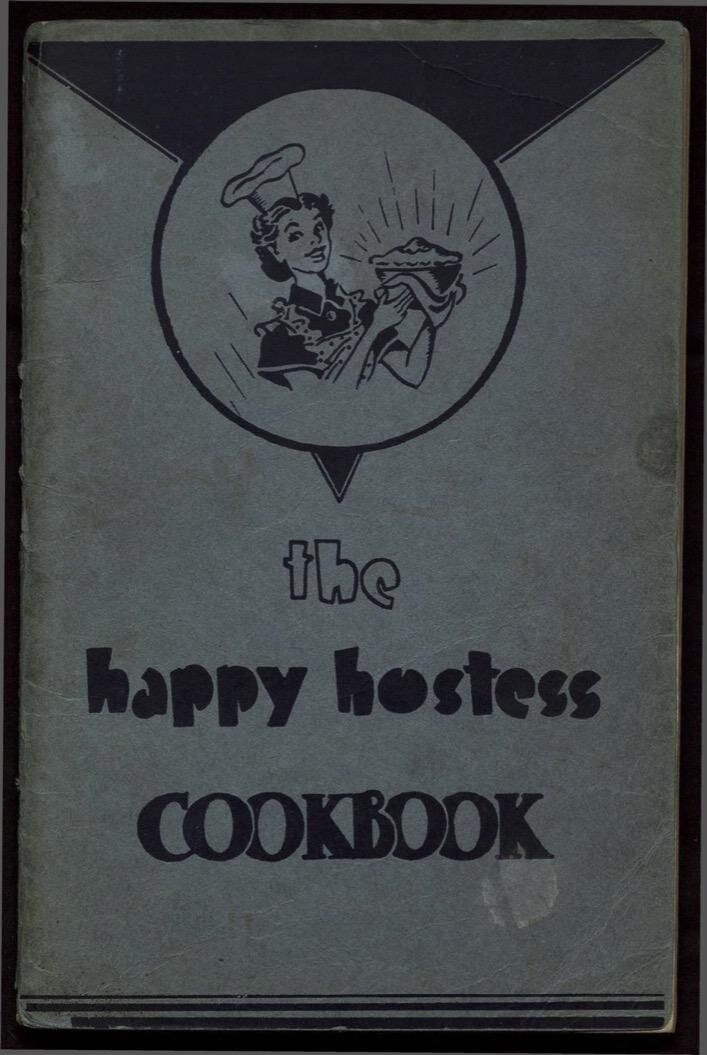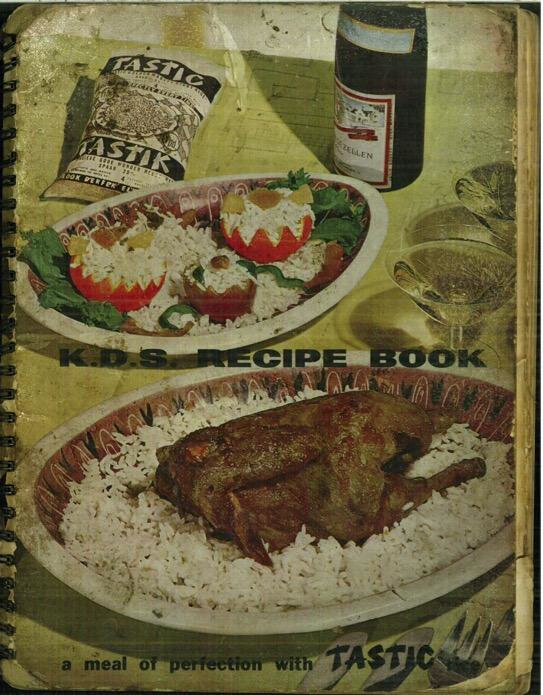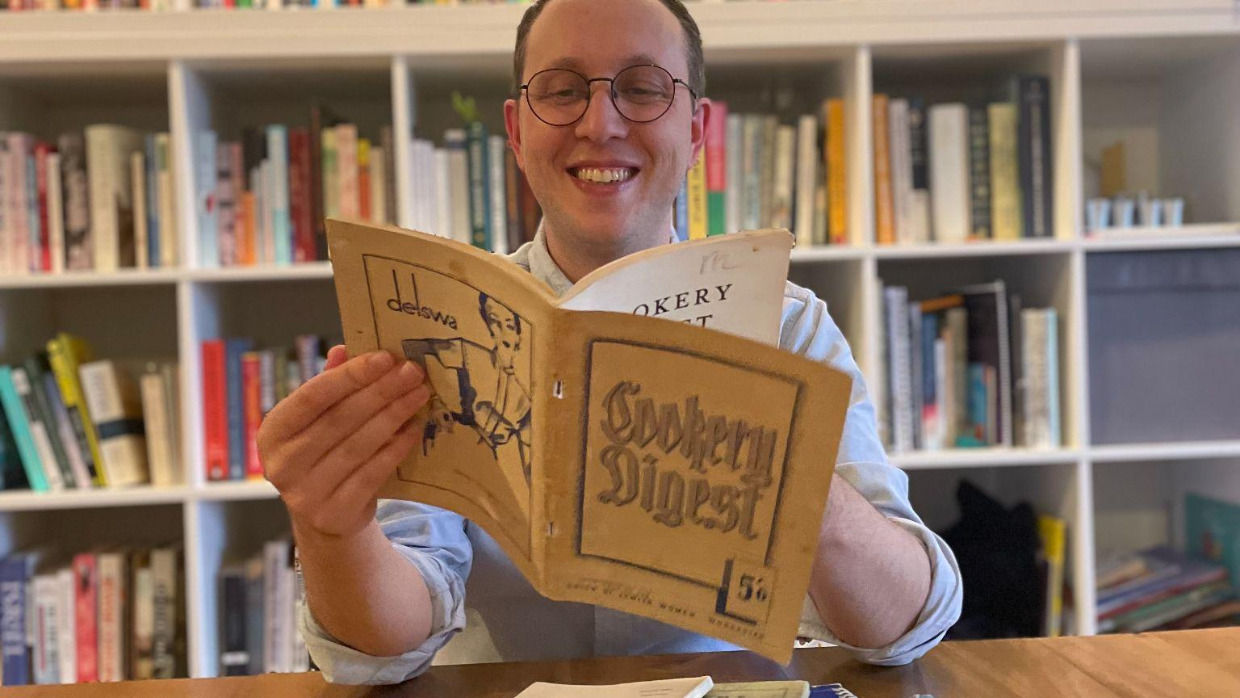When a Jewish holiday comes around, Hatikvah’s Kitchen, The Singing Kettle and Yeshiva College’s Kosher Cuisine are what I turn to first for some no-fail recipes.
Compiled by Jewish housewives proud to share their favorite dish, these are just some of the community cookbooks that once crowded the bookshelf in my mother’s Cape Town kitchen. Now they’re part of my own collection in Ra’anana, Israel. It isn’t certain, in an era of Instagram and viral TikTok recipes, whether they will make it further down the generational chain
This was the same realization historian Gavin Beinart-Smollan had while researching his MA thesis, “South African Jewish CookBooks: everyday life and culture under Apartheid, 1948 – 1994”.
“As these recipe collections were not formally published they didn't make it to libraries and were never sold in bookstores. I understood early on that this study was going to serve also as a preservation project for future generations,” says the South African born academic whose family moved to New Zealand during his early childhood.

Going digital
The next step was to create a website in which the cookbooks would be digitized. With the support of the Kaplan Center for Jewish Studies at the University of Cape Town, 40 recipe books have to date been scanned and uploaded.
These were sent in from around the world as word got around. “Children or grandchildren of the contributors get to hear about the project and will often post them along with a life story, their connection to the recipe contributor, information about the specific community or background of a particular recipe. I even got a pile from the US state of Missouri.”
Sometimes, books originate from a community that has disappeared. One such recipe book was compiled in the 1940s by women in Kimberley, a town in the Northern Cape Province, which attracted many Jews after diamonds were discovered there in the 1860s.

The most popular of the books, Beinart-Smollan reveals, is undoubtedly the International Goodwill Cookbook, which has sold 72,000 copies since it was published in 1951 until its last reprint in 1981. This book was once the go-to engagement gift for brides to be.

A link to a lost culture
The earlier recipe books contain some dishes that have disappeared completely from our modern tables and are what Beinart-Smollan refers to as “a link to a lost culture.” One example is saltosses, a dairy kreplach served on Shavuot.
This is a dish that comes typically from the North Western part of the Russian Empire, which was then Lithuania, where nearly all Jewish South Africans have their roots.
Another typical item from the region is teiglach. South Africans follow the Litvak style for their recipe, which are knotted balls boiled in syrup (American make a smaller round version that is covered in honey).

The housewife era
Interestingly it is not only the recipes in these cookbooks that are important for Beinart-Smollan’s research. The culinary guidelines, advertisements, prefaces and names of the contributors provide a wealth of information, he says.
“As most recipes have the name of their contributor, this becomes a genealogical source. Not only are names of grandmothers and mothers given, but we now know what they were cooking and what they wanted to share with their community.”
The illustrations, mainly done by male cartoonists, also depict the status of women at the time. One example is the King David School cookbook of 1964 where women are only depicted in the salad and dessert section. “This mirrors the gender stereotype of the period where women are only connected to food that is light and frivolous” Beinart-Smollan explains.
The choice of recipes and advertisements in the cookbooks also give us an insight into the aspirations and values of women at the time a book is collated.
In the 1940 and ‘50s, when Jews were still trying to climb the social ladder, fancy French recipes were included in the contents, “to glamourize themselves.” In these early cookbooks the sponsors are wholesalers, dry cleaners and plumbers (most probably businesses owned by the husbands of contributors) but by the 1960s and 70s, swimming pool companies and investment banks start to appear which shows the upward mobility of the community.
In the 1980s and 90s, the trend for elaborate dishes died out and recipes became simple as the community “is more self-confident and doesn’t need to project wealth.” There is also the addition of international recipes from consular offices that adds a more cosmopolitan and sophisticated touch.
Food trends can also be traced by the contents of the cookbooks through the decades. Herring, the food of poverty in Eastern Europe and often the only available protein source, is glamorized by adding cream and apples. In the 1970s, bananas were added to everything, including chicken, to make a dish exotic.
The historian
Beinart-Smollan (35), who now works as a public historian in New York, says he grew up in a food obsessed family. “My mother was a wonderful baker, especially babka and I was always attracted to the history of Jewish food.”
It’s important to keep the connection to the Jewish community cookbooks, he says as they are “precious one stop shops, full of tried and tested recipes and they connect us to our cultural roots.” Check out all the cookbooks on The South AFrican Jewish Cookbook Project website here.
















Love this re the books published, but would love to also either buy or download books or recipes; please come back to me re this possibility; love the books, do have a few, very few but they are the best!